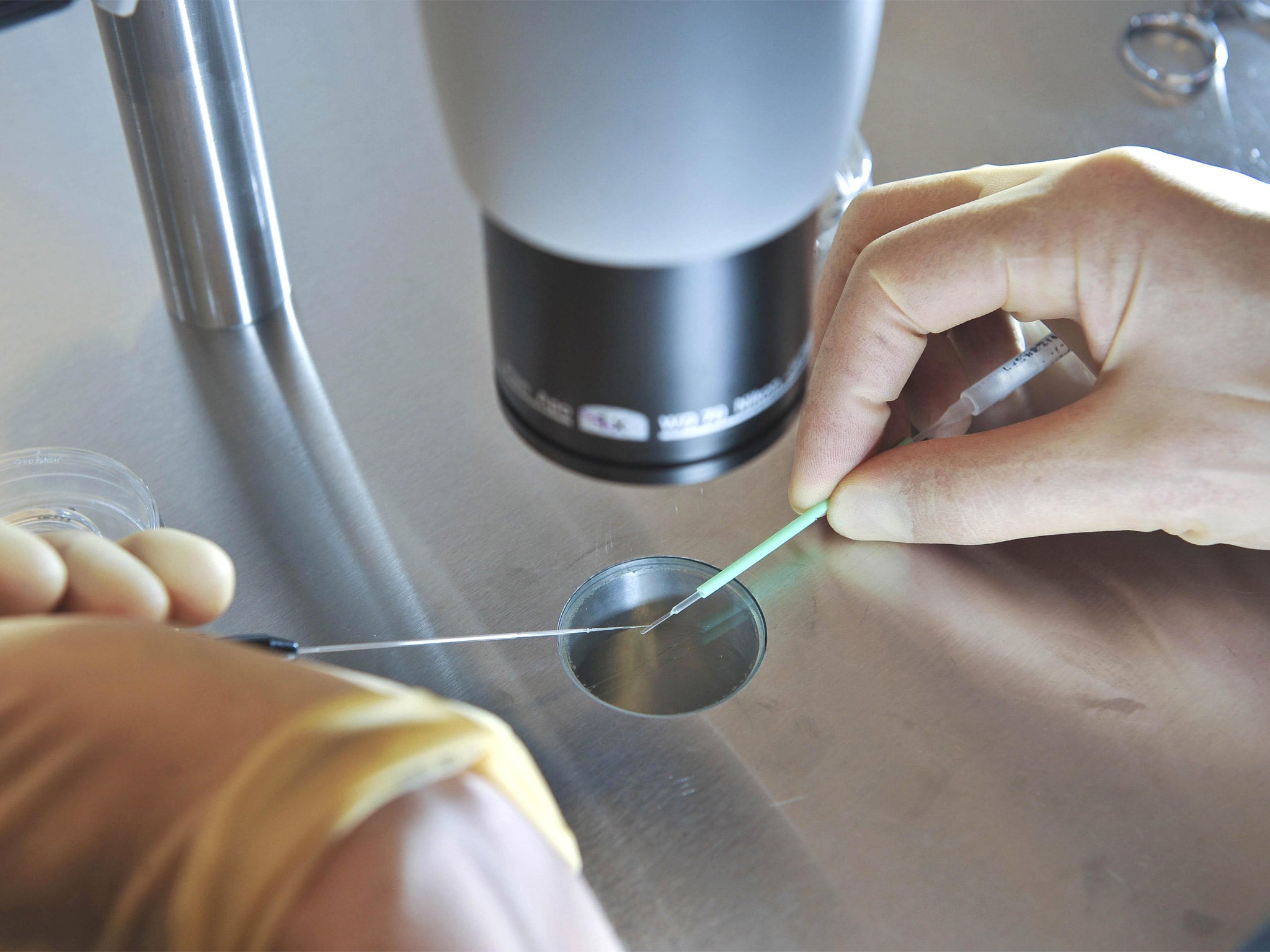Skin cells can help IVF couples have children of their own
Breakthrough offers hope for those who cannot produce eggs or sperm themselves

Infertile couples who cannot produce their own sex cells may finally be able to have children through IVF after scientists achieved a key breakthrough in making sperm and eggs from skin cells.
For the first time, researchers have converted human skin cells in a laboratory into the “primordial germ cells” normally found within the testes and ovaries, which develop into mature sperm and eggs. It is the first and most crucial stage in making male and female sex cells in a test tube.
Eventually, scientists hope to make sperm cells from a man’s skin and eggs from a woman’s so that infertile couples who cannot produce their own sex cells or “gametes” could still have biological children following IVF, the researchers said.
The development could also lead to a better understanding of the “epigenetic” changes within human cells that contribute to ageing and cancer because of the insights it will give scientists about how adult human skin cells can be reprogrammed into sperm and eggs, said Professor Azim Surani of the University of Cambridge.
“I’m extremely excited. This is the first step in demonstrating that we can make primordial germ cells without putting them into patients to verify they are genuine. I think it would probably take between five and seven years to reach that point, and several years after that before they can be used to treat patients,” Professor Surani said.
Scientists in Japan had already shown that it is possible to produce sex cells from the skin cells of laboratory mice and that these eggs and sperm can be fertilised to produce viable, healthy offspring when placed back into the ovaries of surrogate mothers. However, no one until now had been able to show that it was possible to pass the first stage of this process with human skin cells. It was achieved by first inducing the skin cells into embryonic-like stem cells and then switching on a key gene called Sox17 to trigger their conversion to primordial germ cells, Professor Surani said.
The next stage will be to produce synthetic testes or ovaries as simple “organoids” growing in a laboratory dish in which the primordial germs cells will grow and divide into mature sperm and eggs.
“As far as I know there are no existing regulations saying that we can’t do this sort of work,” Professor Surani said. “We’re going to keep working on it and if we reach a point where we are very close to making gametes then I think we will actually ask the university ethical committee first.”
A key feature of the study, published in the journal Cell, was that the human primordial germ cells became stripped of the chemicals surrounding the DNA of the chromosomes thought to be responsible for the epigenetic changes a cell undergoes as it develops.
This will lead to a better understanding of ageing and cancer because primordial germ cells are effectively immortal due to their role in ensuring that genetic information is passed on through the generations, Professor Surani said. “It’s not just about making sperm and eggs for infertility, which would be good, but it also has implications for germ-cell tumours as well as the understanding of this epigenetic reprogramming, which is quite unique, you don’t see it anywhere else,” Professor Surani said.
“Germ cells provide an enduring link between all generations, carrying genetic information from one generation to the next,” he said.
“The erasure of epigenetic information ensures that most, if not all, epigenetic mutations are erased, which promotes ‘rejuvenation’ of the lineage and allows it to give rise to endless generations. These mechanisms are of wider interest towards understanding age-related diseases,” he added.
Subscribe to Independent Premium to bookmark this article
Want to bookmark your favourite articles and stories to read or reference later? Start your Independent Premium subscription today.

Join our commenting forum
Join thought-provoking conversations, follow other Independent readers and see their replies